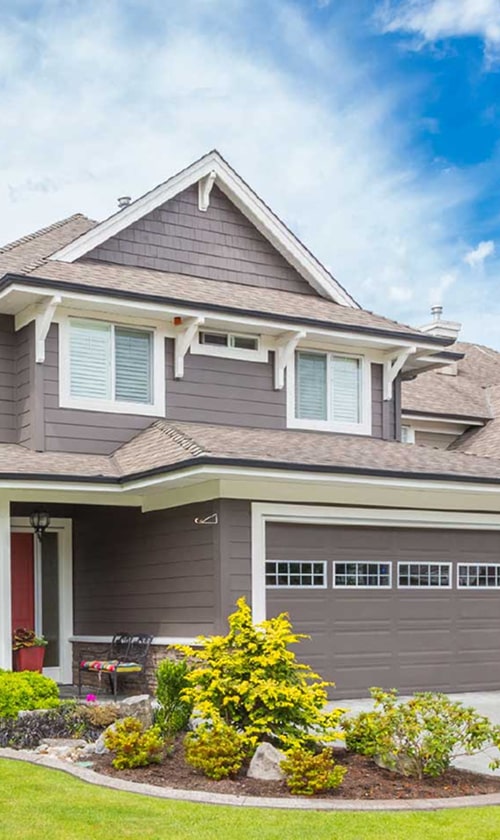Understanding the Fundamentals of Gas Furnace Installation

Let’s explore the basic steps and important considerations for installing gas furnaces. We focus on choosing the right type of furnace and assessing your home’s unique heating needs. This helps ensure a successful and efficient installation process.
Types of Furnaces and Heating Systems
When considering a gas furnace installation, it’s crucial to choose the right type of heating system. Gas furnaces are popular due to their efficiency and cost-effectiveness. Other options include electric furnaces and oil furnaces. Each has its own benefits and considerations.
Gas furnaces are often favored for their ability to heat quickly and efficiently. They can be an economical choice in areas with low natural gas prices. Electric furnaces, on the other hand, rely on electricity, which can be more expensive but might suit homes without a gas line. Oil furnaces offer an alternative, often used in regions not serviced by gas utilities.
Assessing Heating Needs and Installation Area
Before installing, it’s essential to assess our heating needs and the installation area. We need to consider the size of the space and the local climate. An HVAC technician can use this information to recommend the best system for our home.
Sizing is crucial because an undersized furnace will struggle to heat effectively, while an oversized one can waste energy. The installation area must be suitable for the furnace type chosen. Space constraints, venting needs, and existing infrastructure are all factors that an HVAC contractor will evaluate. This ensures that the system operates safely and efficiently.
By understanding these fundamentals, we can make informed choices for our heating system. Proper assessment and selection help in achieving a comfortable and energy-efficient home environment.
Preparation and Safety for Installation

Before installing a new gas furnace, we need to focus on a few critical steps. Removing the old unit is the first task. Ensuring proper ventilation and airflow while installing the new unit is essential. Lastly, we must consider ductwork and insulation to maximize efficiency and safety.
Removing the Old Furnace
The first step is to safely disconnect and remove the old furnace. We start by turning off the power and gas supply to the unit. Safety is crucial here to prevent potential accidents like gas leaks or electrical hazards. Next, we carefully detach all connections, including ductwork, electrical, and gas lines.
We should also check for carbon monoxide during this process. Using a carbon monoxide detector can help in identifying any leaks, ensuring that the area is safe for us to continue working. Proper disposal of the old furnace is our final but equally important task.
Ensuring Proper Ventilation and Airflow
Having proper ventilation is essential for the safe operation of a gas furnace. We must ensure that vents are clear of obstructions to maintain a steady and efficient airflow. Good ventilation also prevents the build-up of harmful gases and helps in efficient heating.
We must inspect and possibly upgrade the ventilation system to accommodate the new furnace. This includes checking for signs of wear or damage in existing systems. Safety checks, such as ensuring there are no blockages in the vents, are vital to prevent gas leaks and other hazards.
Addressing Ductwork and Insulation Considerations
Proper ductwork and insulation can make a significant difference in the performance of our gas furnace. We should inspect existing ducts for any leaks or damage that might decrease the efficiency of the system. Sealing any gaps or cracks will improve airflow and reduce energy waste.
Adding insulation could also be beneficial. Well-insulated ducts ensure that the heat is delivered efficiently throughout our home. Proper insulation around the furnace area is also crucial to maintain a safe environment and enhance energy efficiency. These adjustments not only boost furnace performance but also contribute to a low-cost heating system in the long run.
Executing the Gas Furnace Installation

To ensure a successful gas furnace installation, we need to connect the gas and electrical supply lines securely, configure venting and drain systems properly, and set the thermostat while commissioning the HVAC equipment carefully. Each step requires precision and attention to detail to guarantee safety and optimal performance.
Connecting Gas and Electrical Supply Lines
Connecting the gas and electrical supply lines is a critical step in the gas furnace installation process. We start by identifying the gas supply line and ensuring the valve is shut off. Using pipe wrenches and thread sealer, we connect the gas line to the furnace inlet securely. A leak test using a solution of soapy water helps confirm all connections are tight.
For the electrical connections, we locate the furnace’s electrical panel. It’s important that the power supply matches the furnace’s voltage requirements. Using a screwdriver, we secure the wires to the appropriate terminals, following the color-coded wiring diagram. Double-checking all connections ensures the system operates safely and efficiently.
Configuring Venting and Drain Systems
The venting system is essential for directing exhaust gases safely outdoors. We choose the right type of vent pipes based on the furnace’s specifications, whether it’s standard metal or PVC for high-efficiency units. After measuring and cutting the pipe sections, we connect them to the furnace’s flue outlet using fasteners and caulking for an airtight seal.
For the condensate drain, we connect a PVC pipe to the furnace drain outlet. The pipe should slope downwards to ensure proper flow. Securing the pipe with clamps and checking for leaks ensures water exits the system without issue.
Setting Thermostat and Commissioning HVAC Equipment
After the main installation, setting the thermostat is crucial. We install the thermostat on an interior wall, away from heat sources and drafts. The wiring between the thermostat and the furnace must be precise, using the color coding for a correct setup. Setting the desired temperature allows us to test its functionality.
Commissioning the HVAC equipment involves running the system and checking for any irregularities. We monitor the furnace startup, listen for unusual noises, and verify that the air is flowing properly through the vents. Corrections may involve adjusting the blower speed or rechecking connections, ensuring optimal operation.
Testing and Optimizing the New Furnace
Ensuring our newly installed gas furnace runs smoothly involves careful testing and adjustments. This process guarantees optimal performance and energy efficiency. By performing a thorough test run, we can achieve significant energy savings and reliable heating performance.
Conducting a Test Run and Performing Adjustments
The initial step in testing our gas furnace is conducting a test run. We start by turning on the system and letting it run through a full cycle. This helps identify any startup issues and ensures all components are functioning.
During the test run, we check the airflow from vents to ensure even distribution of heat. Uneven airflow may signal an issue with the blower or ductwork, requiring adjustments. We also monitor for unusual noises or vibrations, which could indicate loose parts or improper installation.
If adjustments are needed, we may need to calibrate the thermostat for accurate temperature control. Ensuring the burners ignite properly and the flame is steady and blue is essential for safe operation. Adjustments are critical in preventing inefficiencies that could lead to increased energy costs.
Verifying Energy Efficiency and Performance
Once the test run is smooth, we focus on verifying the energy efficiency and overall performance of the furnace. We use specific tools to measure the efficiency of the system. We can compare these readings with the manufacturer’s specifications to ensure optimal performance.
It’s crucial to check the system’s heating capacity and verify that it meets our home’s needs. Adjusting settings can maximize energy savings while maintaining comfort.
Regular maintenance, such as cleaning or replacing the air filter, helps in maintaining efficiency. This simple step prevents airflow blockages that could increase energy use. By carefully testing and optimizing our furnace, we can achieve a reliable and efficient heating system.
Post-Installation Maintenance and Tips
After installing a gas furnace, it’s crucial to keep it in good condition for efficient home heating. We’ll cover maintenance tasks and common issues you may face, along with suggestions for improvements.
Routine Maintenance and Professional Inspections
Regular maintenance is key to keeping our gas furnace running well. We should check and replace air filters every 1-3 months to ensure good airflow and efficiency. A clean filter also helps keep the air quality in our home safe.
We should also schedule professional inspections at least once a year. Technicians can spot potential problems, ensure all components are working, and check for carbon monoxide leaks. This keeps our system effective and safe.
Using high-quality materials during maintenance can make a difference. Lubricating motor parts and cleaning burners helps prevent wear. This kind of care can extend the life of our furnace and improve performance.
Troubleshooting Common Issues and Enhancements
Sometimes, we might notice unusual noises, like banging or rattling. These sounds can be signs of loose parts or a dirty burner. Tightening any loose screws or cleaning the burner can often fix the issue.
If our furnace isn’t heating well or the heat is uneven, we might need to balance vents or check the thermostat. Make sure the thermostat is receiving power and set correctly. Better insulation around ducts can improve heat distribution.
For efficiency enhancements, consider programmable thermostats or zone heating systems. These allow us to control temperatures in different areas and help save on energy costs. Such enhancements can lead to a more comfortable and efficient home heating experience.




